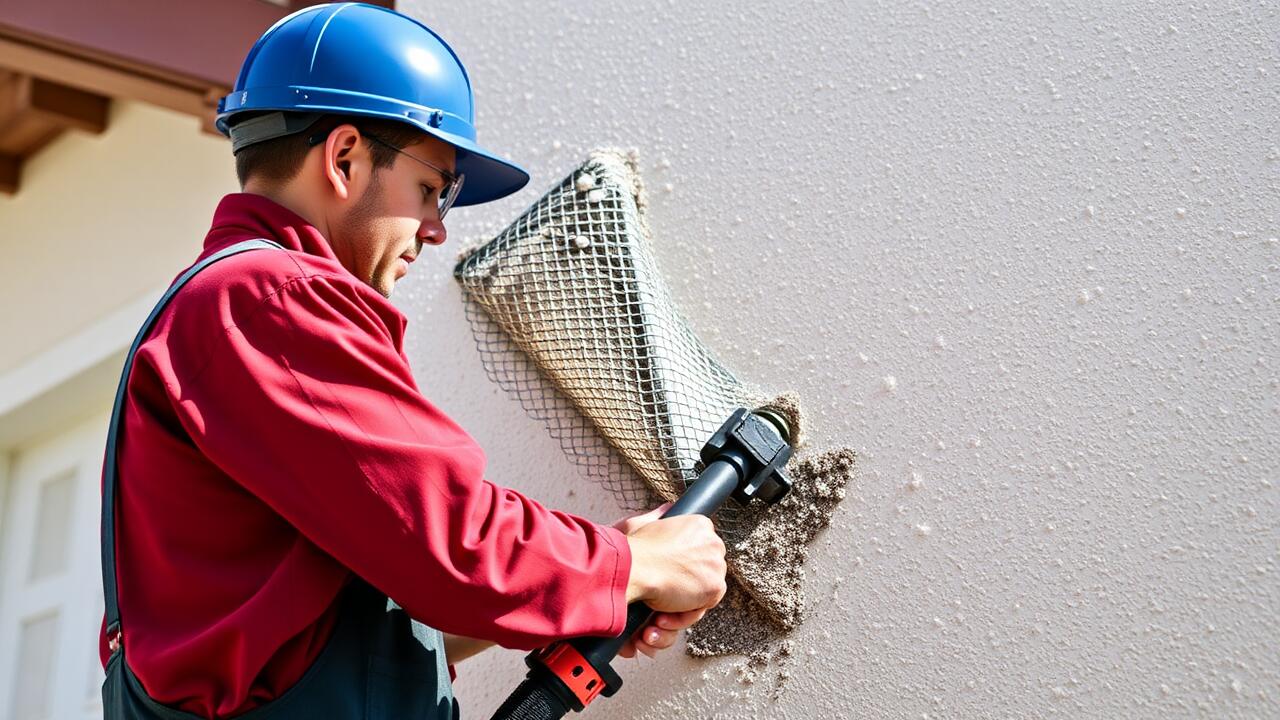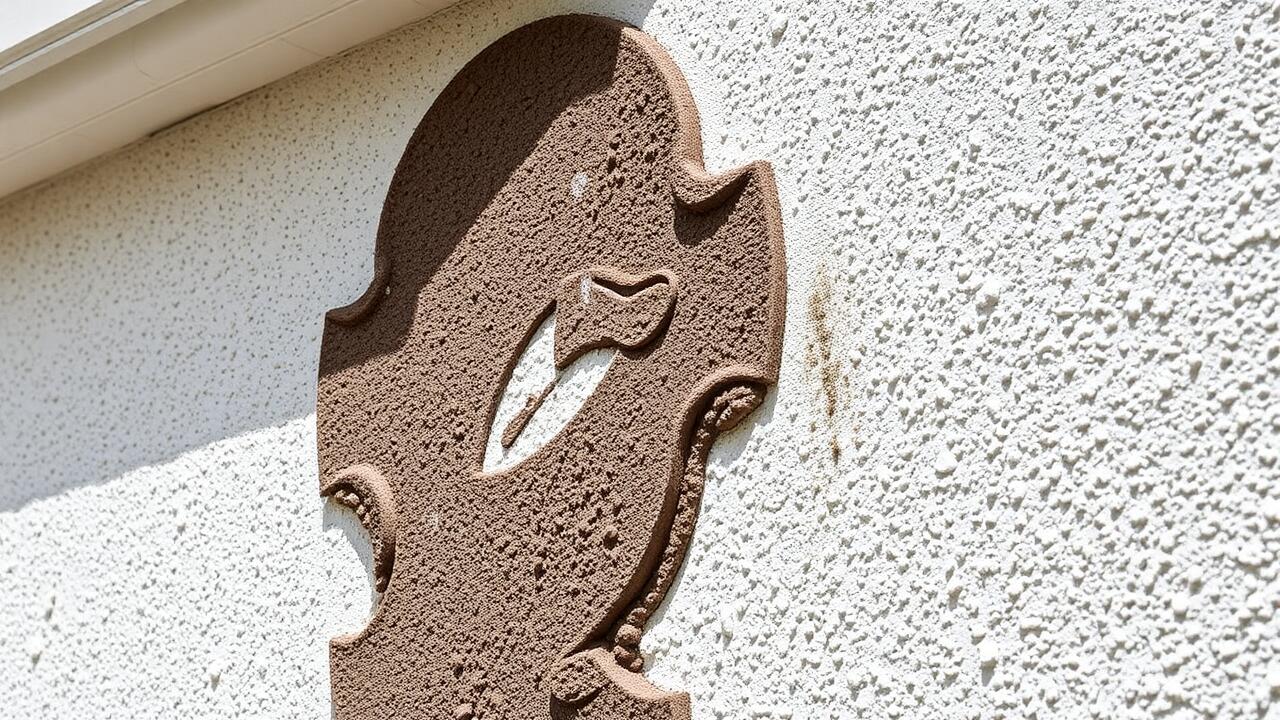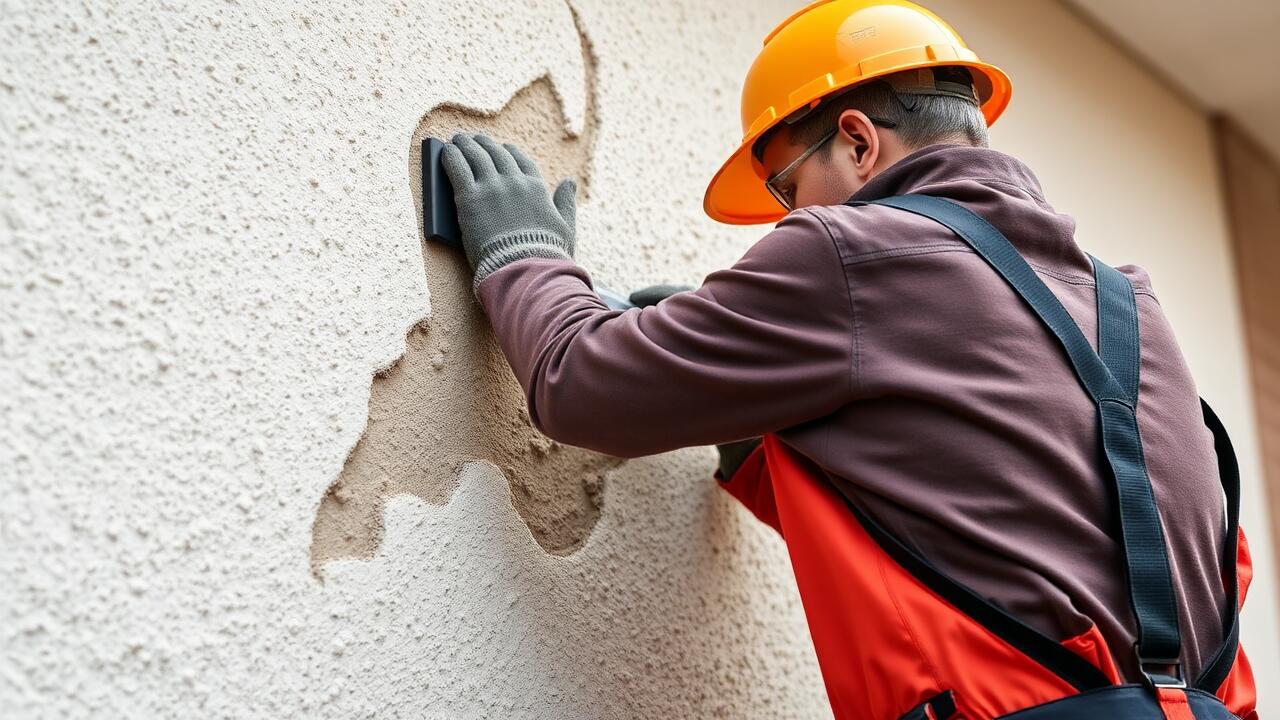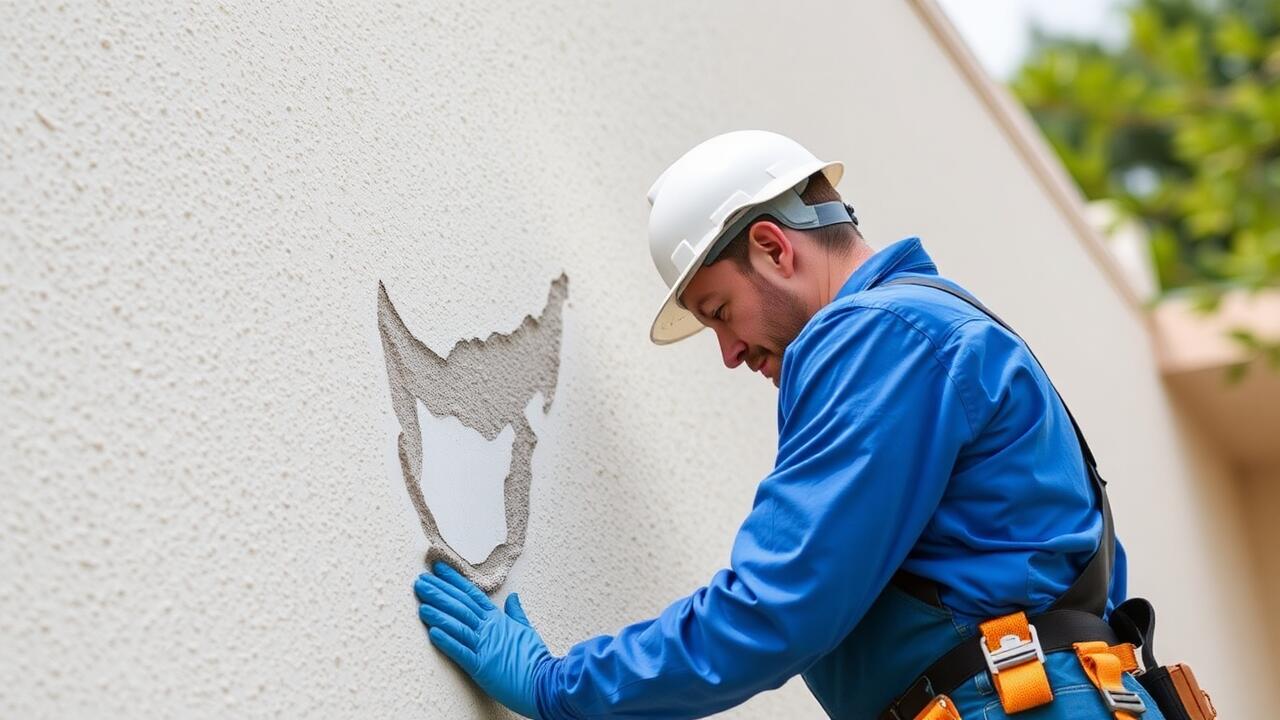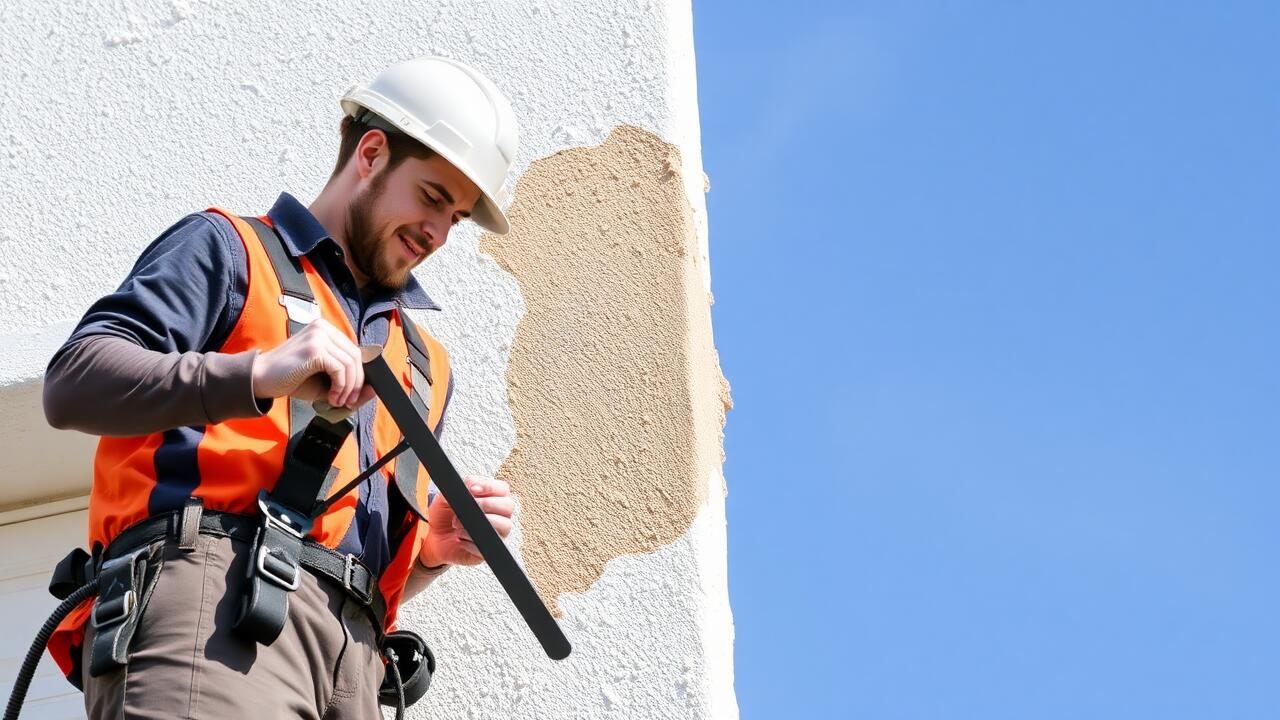
Finishing Touches
After successfully addressing the dents and dings in your stucco surface, the final phase involves applying texturing and painting to create a seamless finish. This step ensures that the repaired areas blend in with the surrounding material, restoring both aesthetics and integrity. Various techniques can be utilized depending on the original texture, such as knockdown, rosebud, or slap brush patterns. Choosing a matching texture is essential in achieving a flawless appearance.
Once texturing is complete, selecting the right paint is crucial. Opt for a high-quality exterior paint formulated for stucco surfaces to promote durability and weather resistance. Proper application techniques will enhance the overall finish, whether you choose a spray, brush, or roller method. For homeowners in Granada Hills, Los Angeles Stucco Repair services can provide expertise in this final touch, ensuring that the result not only looks good but also protects your home from the elements.
Texturing and Painting for Seamless Repairs
Achieving a seamless finish after repairing dents and dings in stucco hinges on the right texturing and painting techniques. First, the patch must be adequately prepared. This involves applying a texture that matches the surrounding surface. Tools such as a trowel and sponge can help create patterns similar to the original stucco finish. For those unsure about replicating the texture, a sample area can be tested beforehand. Local expertise, such as that offered by Tarzana, Los Angeles Stucco Repair, can also provide valuable guidance.
Painting the repaired area is the next critical step. It demands careful selection of paint to ensure proper adhesion and color match. A high-quality, acrylic latex paint works best for stucco surfaces. Lightly dampening the stucco prior to painting can help the new paint bond effectively. When applying paint, multiple thin layers often yield a more uniform appearance than a single thick layer. By blending the repair seamlessly, the overall integrity and aesthetic of the stucco surface are preserved.
Preventing Future Damage
Preventing future damage to stucco surfaces involves a combination of proper maintenance and awareness of environmental factors. Regular inspections can help identify potential issues before they escalate. Look for cracks, signs of moisture buildup, and areas where the surface may be wearing thin. Addressing minor imperfections promptly can save time and money in the long run, ensuring that your stucco remains in good condition. Implementing protective measures, such as installing awnings or gutters, can also divert water away from the walls, reducing the risk of deterioration.
In addition to regular checks, homeowners should consider climate-specific care for their stucco. In regions like Tarzana, Los Angeles, the unique weather patterns may necessitate additional protective treatments. Applying a sealant can create a barrier against moisture while enhancing durability against UV exposure. Keeping vegetation trimmed back from your stucco walls can prevent unnecessary abrasion and moisture retention. By being proactive with these strategies, you can help maintain the integrity of your stucco for years to come.
Maintenance Tips for Stucco Surfaces
Regular maintenance of stucco surfaces is essential to prolong their lifespan and preserve their appearance. Inspect the exterior periodically for any signs of damage, such as cracks or chips. Water infiltration can lead to more significant issues if not addressed promptly. Cleaning the stucco with a gentle pressure wash can help remove dirt, mold, and mildew that may accumulate over time. Resealing the surface every few years provides an additional layer of protection against moisture.
For homeowners in need of assistance, finding a reliable service like San Pedro, Los Angeles Stucco Repair can ensure that all maintenance tasks are carried out effectively. Applying a fresh coat of paint can also enhance the aesthetics while providing extra defense against the elements. Keeping vegetation trimmed back from stucco walls reduces the risk of scratches and allows for better airflow, minimizing moisture buildup. These maintenance practices can significantly enhance the overall durability of stucco surfaces.
When to Call a Professional
Certain signs indicate that your stucco damage may require professional attention. If the cracks have grown in size or are accompanied by water infiltration, it’s time to seek help. Also, large dents or significant areas of impact damage could compromise the integrity of the structure. Tackling these issues without expertise can lead to further complications.
In San Pedro, Los Angeles Stucco Repair services are readily available to handle extensive damage and ensure a quality restoration. Professionals bring the right tools and skills to assess the situation accurately. They can identify underlying issues that may not be apparent to the untrained eye, providing a comprehensive solution that goes beyond cosmetic fixes.
Indicators That Repairs Require Expert Help
Some signs indicate that a stucco repair may be beyond a homeowner's ability to handle. Significant cracks, especially those that extend vertically or horizontally across the surface, can suggest structural issues that need professional attention. A large area of damage or multiple spots requiring repair might also indicate a more serious underlying problem. In these cases, attempting a DIY approach could worsen the situation, resulting in more extensive and costly repairs.
Homeowners in Tarzana, Los Angeles, should consider seeking expert help if they notice mold or moisture buildup behind the stucco. This could indicate that the integrity of the material has been compromised. Additionally, if the texture or finish does not match the existing surface after a repair attempt, a professional may be needed to ensure a seamless look. Consulting with a trusted Tarzana, Los Angeles stucco repair service can provide access to skilled technicians who know how to assess and address these issues effectively.
FAQS
What are the common causes of impact damage to stucco?
Common causes of impact damage to stucco include hail, flying debris during storms, accidental collisions with lawn equipment, and impacts from heavy objects.
How can I identify dents or dings in my stucco?
You can identify dents or dings by visually inspecting the surface for uneven textures, cracks, or areas where the finish appears chipped or discolored. Running your hand over the surface can also help you feel for irregularities.
Can I repair minor dents in stucco myself?
Yes, you can repair minor dents in stucco yourself using patching compounds designed for stucco. However, for more extensive damage, it may be best to consult a professional.
How should I maintain my stucco surfaces to prevent damage?
To maintain stucco surfaces and prevent damage, regularly inspect for cracks or signs of wear, keep gutters clean to avoid water accumulation, and apply a sealant as needed to protect against moisture.
When is it necessary to call a professional for stucco repairs?
It is necessary to call a professional for stucco repairs when you notice extensive damage, structural issues, or if the repairs require specialized tools and techniques beyond basic patching.
